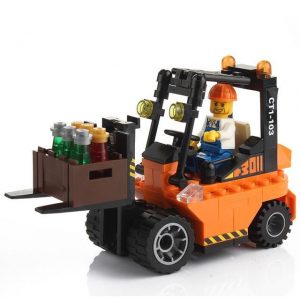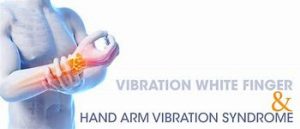
Tip-overs: #1 killer of forklift truck operators
Forklift tip-over was the focus of the UK’s inaugural Forklift Safety Day. And with good reason.
According to the European Agency for Safety and Health at Work (OSHA), tipping accidents are biggest single cause of fatalities (42%) among forklift operators.
Taking these in order… prevention starts with a risk assessment specific to your site, loads, equipment, etc. and creating safe systems of work to eliminate hazards or minimise the risk associated with them.
Many of these can be addressed by removing, re-modelling or reversing routes that require trucks to travel down slopes (especially while laden), eliminating uneven surfaces and keeping ground conditions in good order (so no potholes or debris). It’s also worth talking to your forklift provider to discuss ways to make trucks inherently safer with speed limiters, load sensors, etc.
While we’re on the subject of training, it doesn’t end with operators. The HSE demands that if you supervise materials handling operations you must have the necessary training and knowledge to recognise what good (and bad) practice looks like. The good news is that Managing Forklift Operations courses are now available online to minimise time off site. Contact us if you require further information.
Driving with the mast raised is the single biggest cause of truck-tip events. State-of-the-art software that prevents tipping by seamlessly adjusting the truck’s speed as it enters a turn, taking into account the steer angle and load. The result is reduced risk of tip-overs, less load shedding and improved productivity as the manoeuvre is completed at optimum speed.
Wearing a seatbelt at all times is the simplest and most effective way of avoiding serious injury in a tipping incident. And it’s the law. The HSE makes clear it will “Prosecute site operators who do not take adequate measures to enforce the wearing of seat belts”. The challenge lies in getting operators to comply.
Even where management is vigilant and issues constant reminders, it’s not uncommon for operators to avoid wearing a seat belt (even where there is an interlock), tricking the machine by fastening the seat belt permanently behind them. So what’s to be done?
Some trucks have introduced a “no cheat” seat belt on electric counterbalance trucks. This switchable function allows the employer – at his or her discretion – to select an option that ensures wearing of a seat belt is mandatory.
To enable the truck to drive the forklift, four steps must be followed:
The truck can then be driven normally. If, however, if the sequence has not been completed or if the operator has tried to circumnavigate it, the machine will not function.
Sometimes, the simple stuff can have the greatest impact.
Contact us if you require further information.

Common Work-From-Home Pains — And How to Combat Them
Remote working has been a necessary shift for many businesses. And while it’s solved a couple of issues with safety, there is a downside for remote employees: the lack of proper workspaces. While professionals get to eliminate long commutes, working on sofas, beds, and in dining spaces can be quite detrimental to their health. In fact, hrmagazine.co.uk reports that these makeshift setups have already caused injuries in 11 million adults in the UK.
Remote working can definitely be hazardous, especially if you’re not careful. If you’re a remote employee, then this is what you need to know about the common work-from-home pains and the best solutions against them.
Poor design of your workspace—which includes your seat, desk, even your computer—could be contributing to the physical stress and strain on your body. Over time, you could be at a higher risk of experiencing these common aches and pains caused by the work-from-home setup:
After typing all day, you might notice an uncomfortable pain in your hands and wrists. This pain is usually caused by the position of and tension in your wrists and hands while you’re working on your computer. If your hands aren’t in a neutral position during a great portion of your day, your median nerve becomes compressed through the carpal tunnel. The blood flow in your nerves will then decrease, causing you to feel numbness, tingling, and loss of control in your hands.
Spending too much time in front of a device can cause eye strain, dry eyes, and even transient blindness. These are all major symptoms of computer vision syndrome, which is commonly experienced by individuals who use gadgets up-close for more than three hours a day, according to a study from researchgate.net. Since workers are required to work at least eight hours per day and stay more connected now that setups are remote, they are at a higher risk of damaging their sight.
Working on couches and beds can be comfortable, but it won’t be long until you feel discomfort and pain in your back. Lack of physical activity and poor posture can cause your blood flow in certain areas to stop due to muscle fibre contraction. As a result, remote workers who sit for long periods of time are more susceptible to experiencing pain and tenderness in certain areas of their body, such as their back.
A good home office setup will not only lessen your risk of getting injuries, it will also make you more productive. You can improve your remote working experience by assessing your working environment, investing in ergonomic equipment, and doing exercises to stay active and healthy.
You can prevent injuries or stop these from recurring by identifying their causes. Here at walkersafety.co.uk, we’ve suggested that you must understand your working environment first. After making a thorough assessment of your workspace, you can provide yourself with tools and equipment that can cater to your specific needs.
The right ergonomic accessories can prevent and relieve the common pains of remote workers. Look at getting a well-designed ergonomic chair and adjustable desk, so you can reduce your risk of myofascial pain syndrome and carpal tunnel syndrome. Also consider smaller accessories that can make a world of difference. For instance, if you typically experience discomfort in your hands while working, invest in a wrist splint to keep your hands in a neutral position at all times. Wrist supports can also help in keeping your hands elevated while working. You can also get a standing desk mat, which according to painfreeworking.com helps relieve pain that develops from standing for long periods of time. Most importantly, standing desk mats also encourage better posture.
Step away from the computer and bring relief to your hands, eyes, and muscles by doing various physical activities. Yoga is recommended by netdoctor.co.uk because it can reduce stress, correct your posture, and reverse chronic pain. But that’s just one of a myriad of options you can try. Maybe start a running regimen, try resistance training, or workout with a friend online—anything that can get you away from your desk for a couple of hours will surely do wonders for your health.
By making these necessary changes, you can improve both your working life and your safety at home.
Feature specially contributed to walkersafety.co.uk
Contributed by: JBrogden
Contact Walker Health and Safety Services if you require further information.

8 common forklift truck hazards managers should look out for
Managers are responsible for overseeing many aspects of lift truck operations on site, most importantly, ensuring that everyone is working safely. But what do good and bad operating practices look like? Here are a few of the most common examples of dangerous practice that unfortunately still persist on sites. Any issues like these, that put safety at risk, should be resolved immediately to reduce the risk of serious and costly accidents.
Regular all-round observations are vital to safe forklift operations. Not only will they alert the lift truck driver to debris or overhead obstructions, crucially, it is the operator who is responsible for the safety of any pedestrians in their vicinity. Therefore, it is vital that the operator always completes these checks before they move their truck or raise/lower their load.
One of the main causes of serious workplace accidents and fatalities is being hit by a moving vehicle, so be sure to monitor standards and ensure that operators carry out their all-round observations every time, and do so properly (i.e. really look, not just turn their heads).
Managers must ensure that operators continue to operate as per their training and not allow bad habits or shortcuts to take root.
Loads should always be secured, and weight evenly distributed on the forks. Not only can insecure loads fall and injure those in the vicinity, the sudden loss can also affect stability and cause the truck to tip over.
Watch out for overloading too, as this can also lead to lost loads and tip overs. Make sure that your forklift operators know the difference between gross weight (load plus packaging and pallet) and net weight (load only) and never exceed the truck’s capacity.
Managers should also ensure that operators complete one manoeuvre at a time while carrying a load. For example, turning with an elevated load is a common contributor towards tip-overs, because the higher the load, the less stable the truck, and adding the momentum of a turn dangerously shifts the truck’s centre of gravity. Instead, the operator should turn then lift (not turn and lift).
Pedestrians and forklifts must always remain a safe distance apart, especially in areas where they cannot be physically separated. Pedestrians, whether colleagues or visiting drivers, should not be permitted to help with loading/unloading and should never try and steady a load, as they will put themselves at risk of trapping injuries or being hit by the truck or the load, should it fall.
Tragically, injuries to pedestrians caused by lost loads are almost always avoidable because the pedestrian should never need to be in the operating area in the first place. Should a forklift lose its load with no-one in proximity, the worst-case scenario is damage to your stock or equipment – not ideal, but far preferable to the devastating consequences should a pedestrian become involved.
Putting robust, reinforced Safe Systems of Work in place, will help to maintain safe working distances. Communicate these systems to everyone who may need to access an area where forklifts operate, however rarely this may be. This includes staff, contractors, visitors and delivery drivers.
Operators may be tempted to pile up their loads to reduce the number of trips required. Even if the weight falls within the truck’s capacity, high loads can obscure the operator’s view of their surroundings, increasing the risk of them colliding with other vehicles, pedestrians or racking.
Make sure that operators are travelling with a clear view, so that they can stay alert to any surrounding risks. If their view is obscured by the load and they cannot travel in reverse, then they should use a banksman to guide them.
The HSE is clear in its guidance: “Where restraining systems are fitted they should be used.”
Forklift operators may prefer to not wear them but the fact is seatbelts significantly reduce the consequences of an accident. If the truck was to become unstable and tip over, a seatbelt will stop the operator from being thrown from the cab, or trying to escape: which can lead to them being trapped under the truck.
Adding seatbelts to company policies makes their use mandatory on site and managers should reinforce this through regular monitoring, refresher training, on-site signage, etc.
All too often, avoidable accidents occur when unsuitable equipment is used to complete a task. A common example is using a forklift to raise a colleague, either on the forks or by lifting a pallet or makeshift cage, rather than a purpose-built work platform attachment or MEWP.
Managers should also look out for cases where operators are using equipment in ways it was not designed to be used. For example, lift trucks are built to lift loads, not push them.
Ensure that operators have access to the correct equipment for the task and understand the importance of using it in the way it was designed to be used, to protect themselves and their colleagues.
Operational pressures, tight deadlines and high demand can influence some operators to compromise on safety in an attempt to save time. But rushing comes at a high cost when it increases the risk of tip overs or collisions. Even a dropped pallet causes delays and disruption when you factor in clean up, aisle closures, stock replenishment and repairs, and that’s if no-one is hurt.
Check that operators are aware of speed limits on site and that they understand the need to stick to them at all times, regardless of any operational pressures.
Lift truck operators can become complacent during mounting/dismounting, simply due to the frequency that this is done every day, and may be tempted to jump from the cab. But this increases the risk of slips and falls, and also adds additional distance between them and their cab, potentially putting them into the path of another vehicle.
Managers should ensure that operators are using the 3 points of contact rule: when entering or exiting a truck, keep either one hand and two feet or two hands and one foot on the truck at all times, until seated or stood firmly on the ground. Mentor’s 3 points of contact poster provides a handy reminder to operator’s on site.
These common hazards are just a few examples of risks which managers must target to help protect your team and your business. By regularly monitoring operations and making time for proper supervision, those overseeing your operations can guard against unsafe practice, proactively rectifying any bad habits day-to-day.
According to the HSE’s ACOP (L117), all supervisory staff should be able to:
Contact us if you require further information.

An employer’s guide to Hand-Arm Vibration Syndrome (HAVS)
Hand Arm Vibration Syndrome (HAVS) is a progressive condition that can affect a person’s hands and forearms following prolonged exposure to vibration.
Employers owe a duty to their workforce to take all reasonable steps to reduce the risk of workers developing HAVS, including regular safety assessments, training and providing suitable PPE.
Employers owe a particular duty of care towards staff who have, or may have, a higher risk of developing HAVS due to a history of working with vibrating tools.
HAVS can manifest in a range of debilitating symptoms, including:
HAVS symptoms can get worse over time, even after the affected person stops using power tools entirely. The condition can be extremely serious and can affect someone’s daily life and ability to work.
A HAVS sufferer may be unable to work in cold or wet conditions, carry out fine motor tasks or do any work requiring the use of fingers (such as typing). The severe symptoms of HAVS can make it difficult for affected workers to easily retrain.
The condition can have painful vascular effects that can lead to Vibration White Finger (VWF) and nerve damage. Carpal Tunnel Syndrome is also associated with vibration exposure and can exist alongside HAVS.
Generally speaking, HAVS risk increases with the strength of the vibration and the duration of use, both in terms of the length of time a tool is used before a break, and the overall time that vibrating tools are used.
However, any employee who uses vibrating tools or equipment, for any length of time, is potentially at risk.
Construction workers are particularly likely to be at risk, but the risk to workers in other sectors, including rail and road maintenance, manufacturing and gardening/estate management should also be assessed.
Jackhammers, road breakers and hammer drills are obviously harmful if overused, but almost all power tools carry some degree of vibration risk. Handheld grinders, chainsaws, lawnmowers and strimmers carry a risk of harm, as can stationary saws, drills and sanders.
Employers also owe a duty to accommodate and protect workers who either already have a disability that could put them at greater risk, or who have a history of vibration exposure.
A company must identify workers at greater risk, and take steps to protect them from further harm. A ‘one size fits all’ approach to vibration exposure management is rarely suitable.
The Control of Vibration at Work Regulations require companies to manage vibration-related health and safety risks. As an employer, you must ensure that employees’ exposure to vibration at work is reduced to a minimum, wherever it is reasonable and practical to do so.
In practice, the law recognises that some degree of exposure is inevitable for some workers, including any staff that use vibrating power tools or machinery as a part of their job. It is the employer’s responsibility to regularly assess, monitor and act to reduce this exposure.
Employers’ legal duties include:
As with other areas of health and safety law, such as noise-related regulations, there are fixed levels of exposure at which an employer must take action.
Vibration exposure limits are called the exposure action value (EAV) and the exposure limit value (ELV). These limits are measured using an A(8) value. The A(8) value is the average exposure over an 8-hour workday.
The EAV has a A(8) value of 2.5 m/s2. This represents a piece of equipment’s vibration or movement per second. If an employee is exposed to A(8) value over 2.5 m/s2, their employer must act to reduce exposure as much as possible.
The ELV is 5 m/s2 A(8). This represents the absolute limit of daily exposure that employees must not exceed.
Manufacturers will usually publish the vibration values of their equipment, but the method for calculating a tool’s A(8) value from its rating is not obvious.
Online calculators are available to help you work out A(8) values for different tools and how they should be combined to calculate a worker’s overall risk.
The two key ways to protect workers from vibration-related injury are:
In addition, vibration risk can be reduced by properly maintaining vibrating equipment. Older gear should be replaced if possible. Newer products generally have lower vibration ratings, meaning they can be used for longer. Consumables like abrasive discs should be suitable (i.e. those recommended by the manufacturer), and regularly replaced.
The HSE takes a somewhat sceptical position on the effectiveness of PPE like anti-vibration gloves. Even CE and ISO-certified gloves may actually increase vibration risk under certain circumstances, so gloves should not be treated as a quick-fix solution.
The risk of harm is greater in cold weather, so suitable gloves could be worn in such conditions.
Receiving notification of claim from an existing or past employee can come as a shock to an employer. Compensation claims can be disruptive to a business and can impact morale at a firm.
Your immediate concern should be the well being of the employee as well as ensuring that other employees are not at similar risk of injury.
Chris Salmon, Director of Quittance said, “Most claims do not go to court. Instead, they are a process of a negotiation between the claimant’s solicitor and the employer’s insurer. At certain stages, the insurer will ask you to provide information and respond to assertions made by the claimant’s solicitor.”
“Try to maintain constructive communication with the injured employee or ex-employee from the outset. This approach can have a positive effect on the outcome, and should reduce the likelihood of acrimonious court action and knock-on consequences for company morale.”
On receipt of a claim notification form, you should:
Attributing liability for an occupational disease can be complicated. HAVS can be gradually contracted from prolonged exposure to vibration at a number of previous employers.
If the employee was exposed to vibration at previous or concurrent employers, a split liability agreement may be reached. Under such an agreement, compensation may be shared between your insurer and the other employers’ policies.
It could be that the employee is partially responsible for the condition. If, for example, the employee repeatedly failed to take mandated breaks, it may be argued that they contributed to the condition and compensation might be reduced.
Contact us if you require further advice.
Guest Speaker – Chris Salmon Director and Co-Founder of Quittance Legal Services

Ways to improve your forklift truck safety this winter
Forklifts come with risks no matter what the time of the year. However, when the winter brings cold, wet and icy weather, the risks can significantly increase. Kelly Friel is the Digital Product Manager from PPE and tool retailer, Zoro. Here, she explains how you can improve your forklift truck safety during the colder months.
If you work in construction or warehousing, forklifts can be a lifeline to your daily duties. But, while they can be incredibly useful in shaving down labour time and removing the need for workers to move heavy materials, they can pose a lot of health and safety issues. According to latest statistics reported to the HSE, some of the main causes of worker fatality include being struck by a moving vehicle (20%), trapped by something collapsing or overturning (15%), and contact with moving machinery (11%) — all of which are possibilities when working with, or around, powerful machinery like forklifts (Workplace Fatal Injuries in Great Britain, 2020).
And, with winter on the horizon, the conditions on your construction site or yard could soon become treacherous. Not only does this directly affect forklift truck drivers, but also the workers around them. Here, I’ll be sharing my top tips for improving your site’s forklift truck safety during the colder months.
Knowing how to properly operate a forklift, and how to deal with any problems that arise, will be key to safety on the site for everybody. With slippery surfaces, reduced lighting and strong winds to contend with during winter, your forklift truck drivers may need some additional training, particularly if you’re planning to add extra safety measures around the site, such as a new route for machinery. Similarly, ensuring they know exactly what checks to carry out at the beginning of each shift, and are aware that they’ll need to give the forklift some time to warm up before operation, will be imperative to safe and optimum usage.
As well as this, you also might want to impose some restrictions on forklift usage. For example, while it might not be productive to limit the hours the forklift can be used, limiting the speed at which it can travel after a certain time and in particular conditions can improve the safety on site for everyone. You could even implement some speedbumps to ensure drivers stick to these limits and are warned for when coming up to particularly dangerous zones.
If you’re unsure on the additional training you’ll need to give, finding a consultancy that offers guidance and health and safety training, like Walker Health and Safety Services, will ensure you’re identifying and managing all potential risks for your workers and site visitors.
Before you let your workers carry on their duties, it’s imperative that you have done the necessary checks and changes to your forklift to ensure it’s fit for purpose during the winter. This could include investing in some durable forklift covers that will shield it from wind, rain, ice and other elements, which could impact its usual functioning. These covers can vary from metal cabs to plastic canopies, and the type you choose will depend on where your forklift is stored and, consequentially, how much extra protection and shelter it’ll need.
For construction sites, you’ll want to consider changing the tyres to ones that are suitable for challenging weather conditions. These tyres have greater traction, so won’t be as phased by wet and icy flooring around your site, reducing the chances of your forklifts skidding and causing damage or injury. For machinery that regularly goes between indoor and outdoors, you might even want to consider buying some pneumatic tyres that handle slippery floors better. These are typically best for forklifts that are lifting heavyweight materials, such as bricks, so you may need to add some tyre chains and studs to offer extra traction.
It’s important to remind workers that during these wetter months, it’s key for them to clean the forklift down after every shift. This will help to remove any build ups of dirt and debris. And, by drying the forklift’s body before storing it, they’ll also be able to spot and get rid of any rust. Each forklift will have specific care guidelines, so make sure your workers are following the daily and weekly checks outlined in the operator’s manual to keep your forklifts in great condition.
As an employer, it’s a legal requirement for you to adhere to the advice given in the Personal Protective Equipment at Work Regulations (1992). So, you no doubt already supply your workers with a sufficient amount of protective clothing when they’re on site. However, with new health and safety risks arising in the colder months, it may be necessary to take a look at what PPE is missing to protect your staff from these problems, including cold stress.
For example, it is not uncommon for cold weather to wreak havoc on your workers’ body temperatures, meaning they can have trouble regulating it when spending time outside. For this reason, it’ll be important to ensure your workers are wearing lots of thin layers rather than thicker ones, so they can choose when to take off or add layers, and can do so comfortably. The clothes your workers wear will need to stand up to the elements, so investing in some weather- and windproof materials, such as Gortex and nylon, will help them to keep warm when out on the job. Similarly, providing thick, insulated gloves and leg warmers will be key.
As the evenings draw in earlier, and we have reduced hours of daylight, it’ll be incredibly important to ensure the high-visibility PPE you offer are more than sufficient. High visibility clothing is split into three categories, with class 1 offering the most basic level of protection and class 3 offering the most. For your construction site in winter, you’ll want to invest in class 3 for everybody, even if you’ve increased extra lighting around the site. This is so forklift truck drivers can be seen and so can other workers around the site, to reduce chances of injury or fatality.
You’ll need to look beyond the safety of your forklift and ensure that your site is also safe. For example, you may need to invest in some extra lighting for the darker hours your workers will be working in. These could be floodlights or tower lights depending on the size of your site and how much additional lighting you’ll need.
If you’ve set up separate routes for pedestrians and your forklifts to travel around, you’ll need to sufficiently highlight which path is for who. So, additional signage will be key.
When the floor is particularly wet and slippery, remembering to grit it regularly, including at the beginning of each working day and a few times during the day, to reduce the amount of accidents for workers and forklift operators.
Protect your forklift operators and the rest of your workers from injuries and fatalities by taking the time to think about the risks associated with cold weather and how to tackle these.
Contact Walker Health and Safety Services if you require further information.
Guest Blogger – Kelly Friel from Zoro.